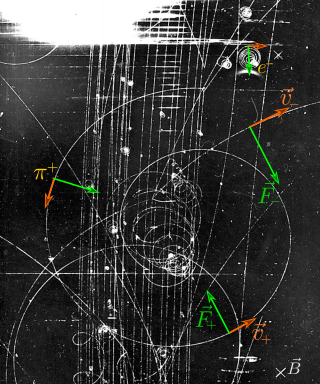Characteristics of first-order partial differential equation
For a first-order PDE (partial differential equation), the method of characteristics discovers curves (called characteristic curves or just characteristics) along which the PDE becomes an ordinary differential equation (ODE). [1] Once the ODE is found, it can be solved along the characteristic curves and transformed into a solution for the original PDE.
For the sake of simplicity, we confine our attention to the case of a function of two independent variables x and y for the moment. Consider a quasilinear PDE of the form
(1)
Suppose that a solution z is known, and consider the surface graph z = z(x,y) in R3. A normal vector to this surface is given by
As a result, [2] equation ( 1 ) is equivalent to the geometrical statement that the vector field
is tangent to the surface z = z(x,y) at every point, for the dot product of this vector field with the above normal vector is zero. In other words, the graph of the solution must be a union of integral curves of this vector field. These integral curves are called the characteristic curves of the original partial differential equation and are given by the Lagrange–Charpit equations [3]
A parametrization invariant form of the Lagrange–Charpit equations [3] is:
Linear and quasilinear cases
Consider now a PDE of the form
For this PDE to be linear, the coefficients ai may be functions of the spatial variables only, and independent of u. For it to be quasilinear, [4] ai may also depend on the value of the function, but not on any derivatives. The distinction between these two cases is inessential for the discussion here.
For a linear or quasilinear PDE, the characteristic curves are given parametrically by
such that the following system of ODEs is satisfied
(2)
(3)
Equations ( 2 ) and ( 3 ) give the characteristics of the PDE.
Proof for quasilinear Case
In the quasilinear case, the use of the method of characteristics is justified by Grönwall's inequality. The above equation may be written as
We must distinguish between the solutions to the ODE and the solutions to the PDE, which we do not know are equal a priori. Letting capital letters be the solutions to the ODE we find
Examining , we find, upon differentiating that
which is the same as
We cannot conclude the above is 0 as we would like, since the PDE only guarantees us that this relationship is satisfied for , , and we do not yet know that .
However, we can see that
since by the PDE, the last term is 0. This equals
By the triangle inequality, we have
Assuming are at least , we can bound this for small times. Choose a neighborhood around small enough such that are locally Lipschitz. By continuity, will remain in for small enough . Since , we also have that will be in for small enough by continuity. So, and for . Additionally, for some for by compactness. From this, we find the above is bounded as
for some . It is a straightforward application of Grönwall's Inequality to show that since we have for as long as this inequality holds. We have some interval such that in this interval. Choose the largest such that this is true. Then, by continuity, . Provided the ODE still has a solution in some interval after , we can repeat the argument above to find that in a larger interval. Thus, so long as the ODE has a solution, we have .
Fully nonlinear case
Consider the partial differential equation
(4)
where the variables pi are shorthand for the partial derivatives
Let (xi(s),u(s),pi(s)) be a curve in R2n+1. Suppose that u is any solution, and that
Along a solution, differentiating ( 4 ) with respect to s gives
The second equation follows from applying the chain rule to a solution u, and the third follows by taking an exterior derivative of the relation . Manipulating these equations gives
where λ is a constant. Writing these equations more symmetrically, one obtains the Lagrange–Charpit equations for the characteristic
Geometrically, the method of characteristics in the fully nonlinear case can be interpreted as requiring that the Monge cone of the differential equation should everywhere be tangent to the graph of the solution. The second order partial differential equation is solved with Charpit method .

























































































